The Laurence Binyon Prize and India
The Laurence Binyon Prize and India
By Lauren Winch, February 2023
Last summer I had the incredible opportunity to visit Rajasthan in India, thanks to the generous Laurence Binyon Prize. Awarded by the History of Art department, the prize supports travel to a region beyond Europe, especially to Asia. It encourages students to engage with culture outside their academic specialisms, extending knowledge and appreciation of the visual arts.
My time in India was focused around internship placements with the City Palaces of Jaipur and Udaipur. Whilst I had taken the brilliant module focusing on pre-modern South Asian sculpture run by Mallica Kumbera-Landrus during my BA History of Art at Oxford, the history of India’s princely states from the fifteenth century were a new area to me. I had developed an interest in these histories after seeing the wonderful Rajput and Mughal miniatures in the Ashmolean Museum.
Jaipur: City Palace and Hawa Mahal
My first stop was Rajasthan’s capital Jaipur, known as ‘Pink City’: its old walls, gatehouses, and palace at the heart of the bustling metropolis glow rose-orange. Established by Maharaja Sawai Jai Singh (1727), the palace formed the ceremonial and administrative of the princely state, and continues to be the home of the royal family today. Architecturally, it fuses Rajput and Mughal styles.
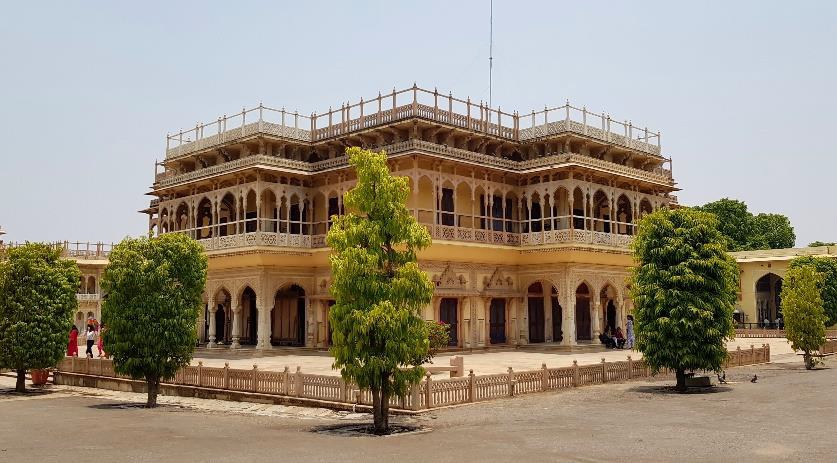
One of its most famous structures is the Chandra Mahal: a seven-floor complex where each level is ornamented by unique combinations of paintings and coloured glass. The Chhavi Niwas is particularly striking, decorated from top to bottom with flora in blue and white. Another architectural wonder is the four doors of Pritam Chowk, each dedicated to a Hindu deity.
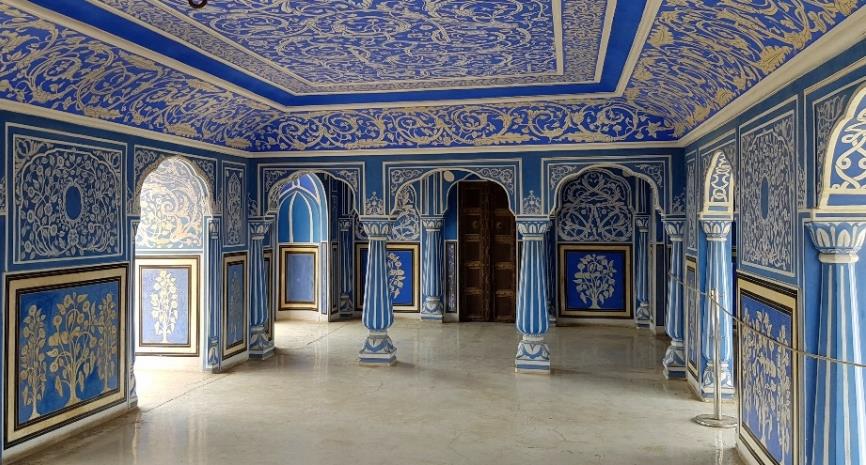
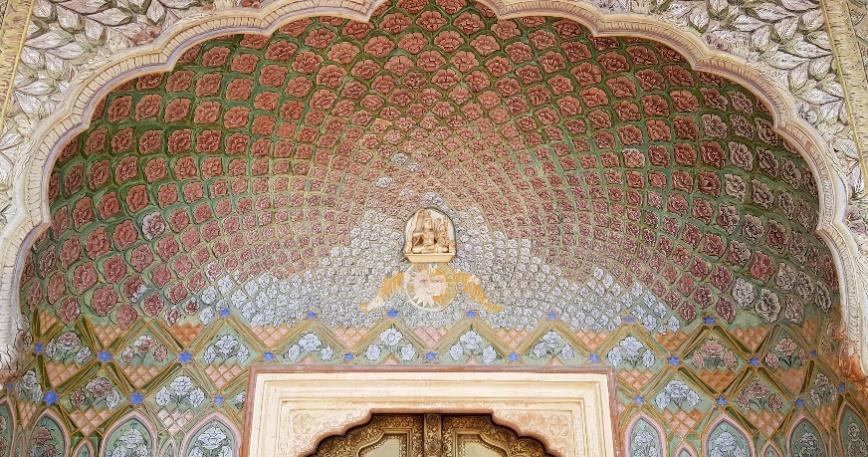
I was able to work closely with the City Palace collections team, and support with tasks such as writing new labels for their galleries. I absolutely loved exploring the textiles; Rajasthan is renowned for its fabulous embroidery, such as golden zari and gota: an applique technique with woven satin and ribbons. Originally some of these garments were worn during dances; I experienced how this tradition continues today when watching an incredible performance by young participants of the annual summer school, who shared they fused Indian classical and traditional Rajasthani tribal dance.
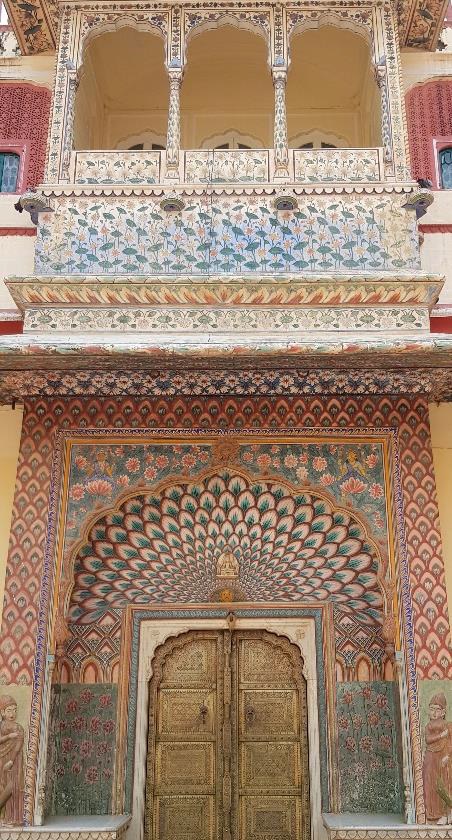
The grandson of Maharana Sawai Jingh Singh, Sawai Pratap Singh, built another iconic landmark in the city, the Hawa Mahal or Palace of the Winds (1799). This complex housed the Zenana - women’s chambers. The exterior is decorated with latticework (jharokhas), which allowed the female courtiers to look down upon the street below without remaining hidden. These lattice structures are sometimes referred to as jali (literally ‘net’) which provided intricate patterns casting fabulous silhouettes, and cooled a space with ventilation. I even tried creating jali myself, as the curators organised a workshop; after carving out some very crooked designs, I realised just how much technical skill this stonework demands!
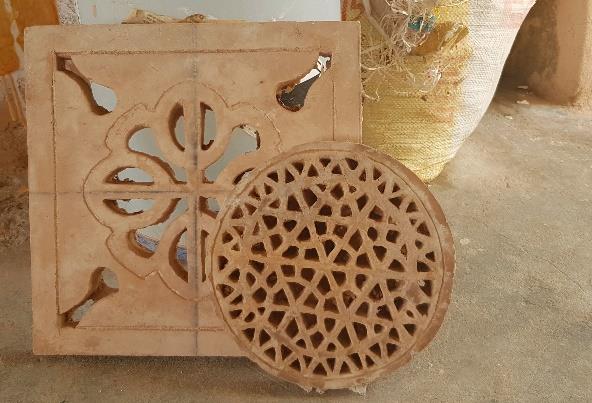
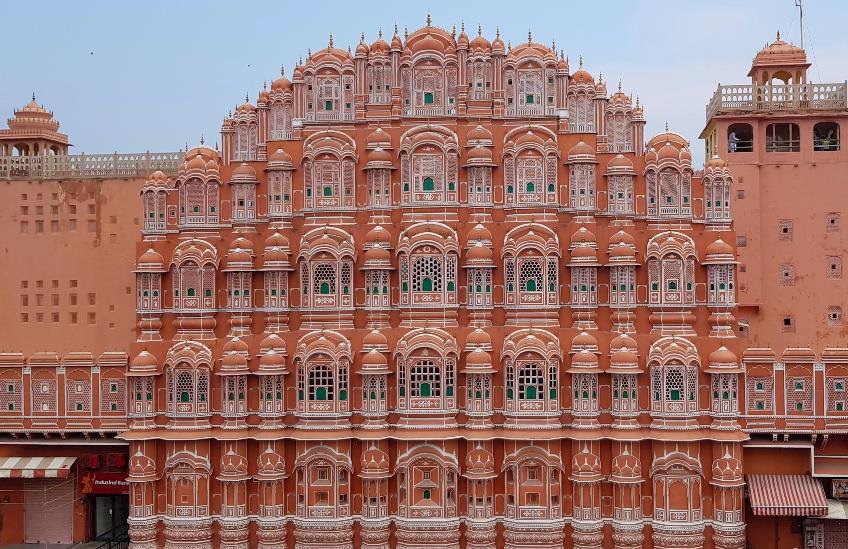
Jaigarh and Ajmer
Rising above Jaipur atop the Cheel ka Teela (Hill of Eagles) is the spectacular fortress of Jaigarh (garh means ‘fort’), which the curatorial team at City Palace Jaipur also care for. Built under Sawai Jai Singh (1726), this sandstone fortress combines a formidable presence with luscious gardens such the beautiful Charbagh. The garden includes a triple archway looking out onto the most spectacular landscape I have ever seen; the winding walled defences of Jaigarh cascade down hills abundant with greenery, which flourishes during monsoon season. When not admiring my incredible surroundings, I was busy helping the curators with their conservation work, including cleaning elephant howdah covered in several inches of Thar desert dust!
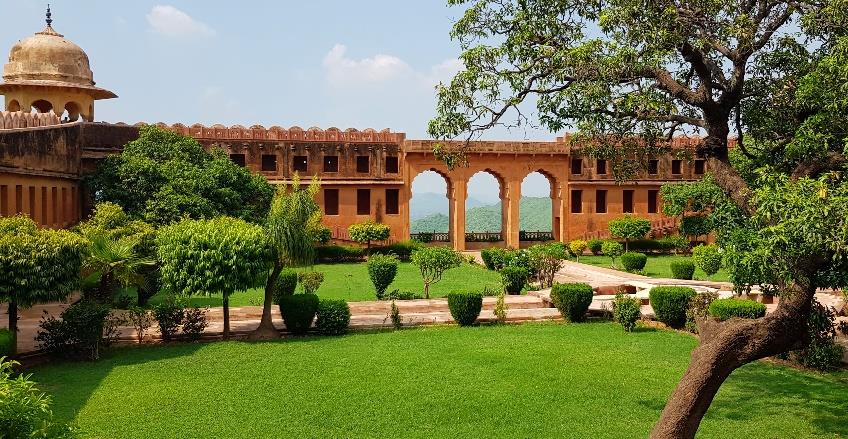
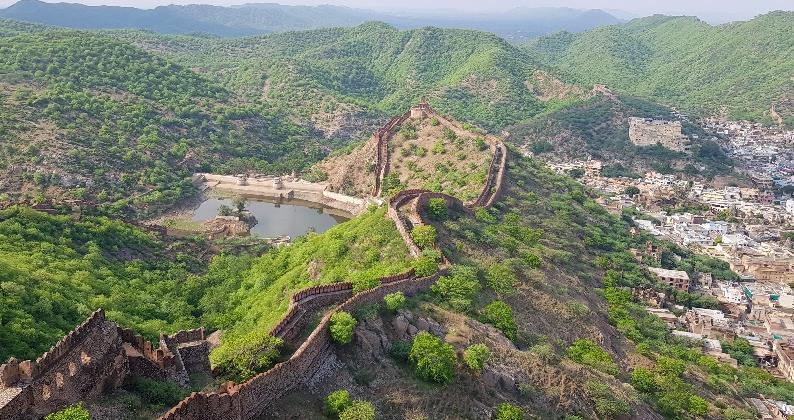
Jaigarh overlooks Ajmer, the former capital of Rajasthan before Jaipur. The fort (1592) is another wonderful example of Rajput and Mughal architecture; my favourite feature was the Ganesh Pol (gate), animated by vibrant paintings celebrating the Hindu elephant deity.
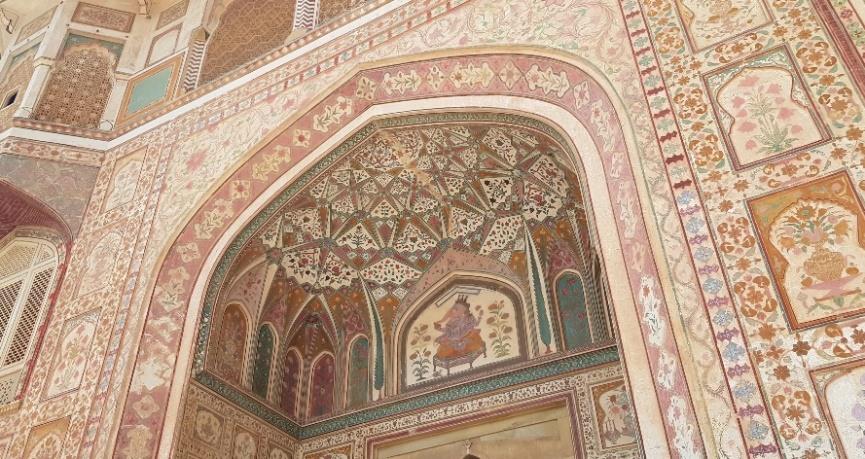
City Palace Udaipur
During the second half of my trip, I travelled south to City Palace Udaipur: the home of the Sisodia dynasty, and the centre for the Mewar school of miniature painting. It holds an incredible corpus of work, and my main task at City Palace Udaipur was to facilitate a workshop in conjunction with the exhibition ‘Portraits, Kings, Landscape: The Practice of Painting at Udaipur.’ I had great fun producing illustrations with visitors and local school children inspired by the miniature collection. These works are known for vivid blocks of pigments; bold outlines; patterns; and use of multiple perspective whereby various viewpoints are fused into a single image. There is a brilliant study recently published by Dipti Khera on the affective power of Mewar landscape painting as ‘scenescapes’ evoking the bhava (mood, atmosphere, emotion) of a place, rather producing mimetic representation.
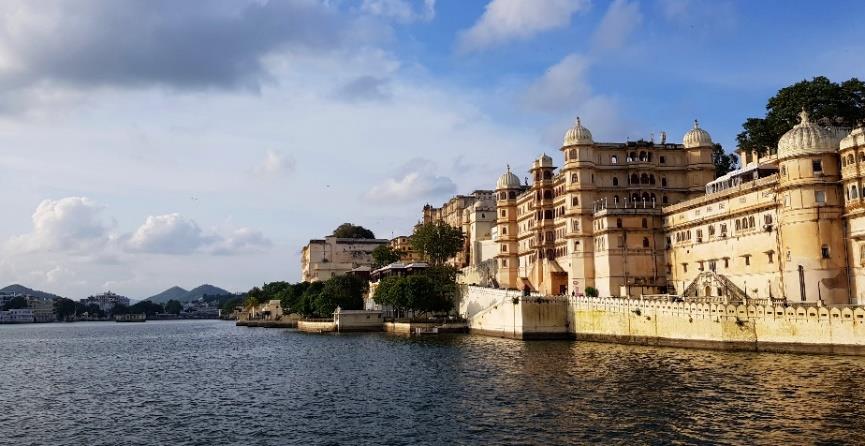
One of my favourite paintings was made by Ghasi (active c.1820-30s), a celebrated architectural draughtsman. It shows Maharana Jawan Singh worshipping in the tranquillity of Baadi Mahal in the Palace. The painter skilfully adapted the architecture, revealing views we would not otherwise see. City Palace also includes wall paintings; the Chitram ki Burj (painting gallery) is embellished from top to bottom with scenes of courtly life (c.1820), probably created during the reign of Maharana Bhim Singh by followers of Ghasi.
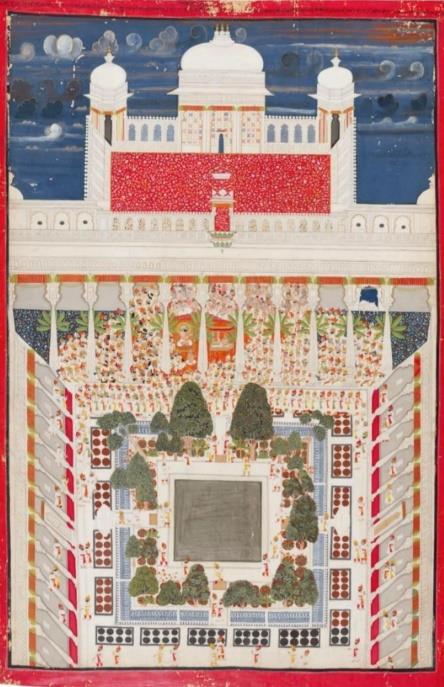
A photo of a painting by Ghasi titled
'Maharana Jawan Singh at a Vaishnava Recitation'c. 1835, Udaipur.
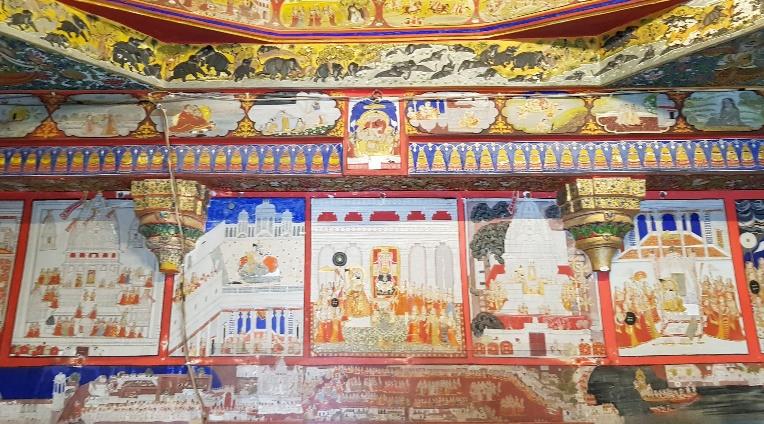
Magnificent Temples of Mewar
Several of the scenes in the Chitram ki Burj depict local temples, such as Jagdish (1652), located just outside City Palace. The shrine is named after Maharana Shri Jagdish Singh Ji I, and dedicated to Lord Vishnu or Laxmi Narayan. After travelling up a long flight of steps, visitors reach the shikara tower rising to an amazing 125ft. I was also able to visited the Hindu and Jain temples of Chittorgarh, the former capital of Mewar. My favourites were the Kumbhaswami and Samadishwara shrines: like Jagdish, they teem with intricately carved mythological narratives, elephants, auspicious female dancers and warriors.
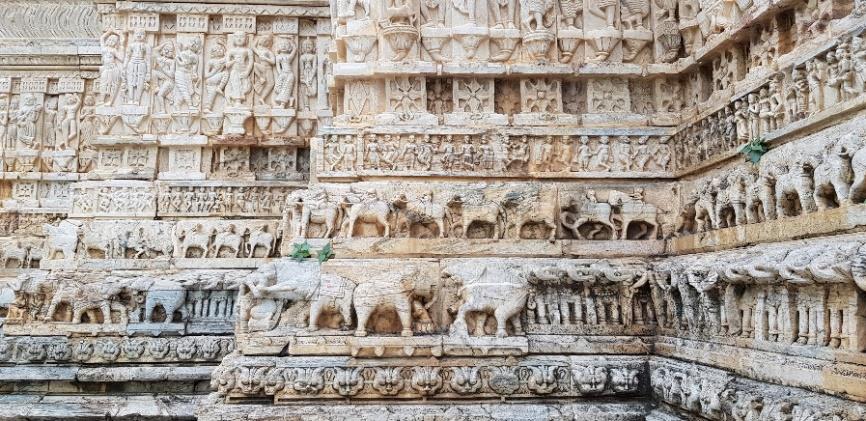
Trips Around Rajasthan and Uttar Pradesh
The Laurence Binyon Prize enabled me to visit various other historical sites when not working at the City Palaces, including those of Agra. Everyone will have seen photographs of the Taj Mahal time and again, but it truly lives up to its status as one of the seven wonders of the world! Just as stunning is Agra Fort further along the river. My favourite details on these monuments were the parchin kari: coloured gemstones inlaid into luminous white marble to form swirling arabesques and calligraphic thuluth script.
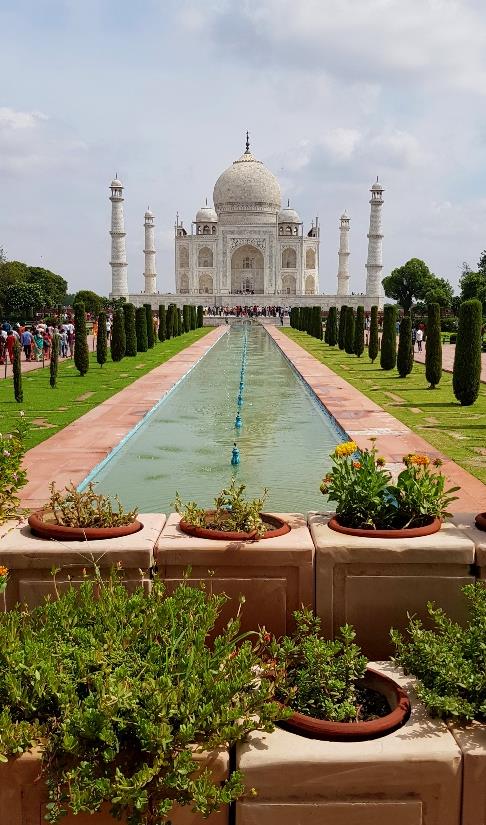
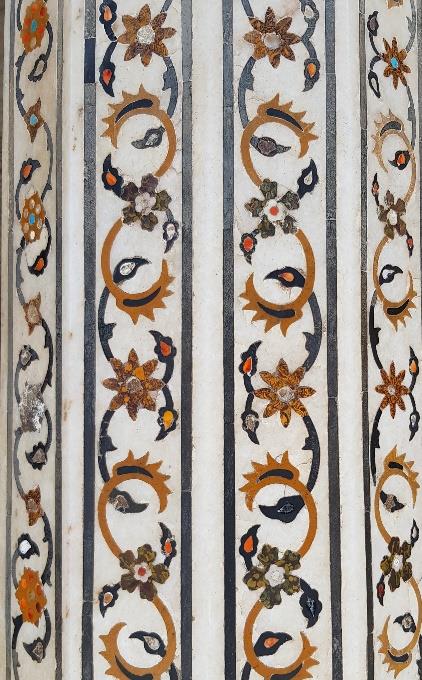
But my favourite trip was to the Bhartiya Lok Kala Mandal in Udaipur; a cultural centre dedicated to Rajasthani folk arts. I had this wonderful gem of a museum entirely to myself and was able to explore art forms which are often overlooked in favour of canonical monuments or paintings. These included phad made on cloth scrolls and representing folk deities. The paintings travel with nomadic communities as portable temples, enhancing storytelling performances. The kavad serves a similar function; this box-like structure is a mobile miniature temple with layers of doors which open up to reveal episodes from epic narratives like the Ramayana. The central niche houses Rama, Lakshmana and Sita, who offered darshan to worshippers (seeing and being seen by deities). Singing and dancing would accompany itinerant priests who travelled from village to village, and collected coins from worshippers put into a slit on the kavad. As I explored the Bhartiya, it blew my mind that the artists who create these objects are often continuing a family tradition extending over 700 years!
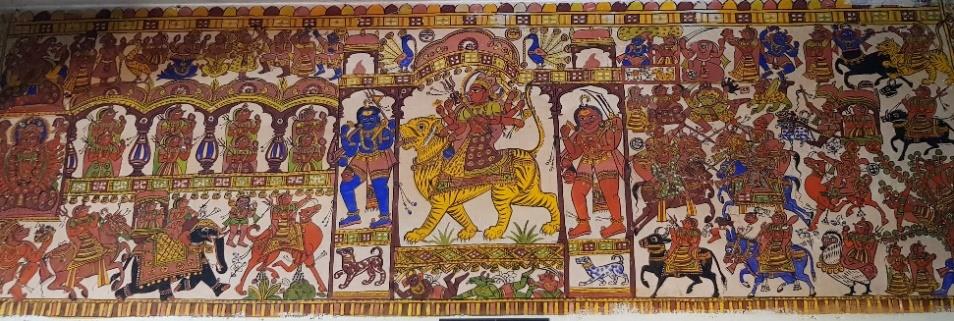
Reflections
I could not be more grateful to the collections teams at Jaipur and Udaipur, who went above and beyond their role as hosts, not only allowing me to work closely with their exquisite collections, but also sharing the local culture. I thoroughly enjoyed learning some Hindi; exploring vibrant markets; trying local foods – my favourite was gatte ki sabji. Without the Laurence Binyon Prize, I would not have been able to travel to India, so I am enormously grateful and I would really encourage students to apply!
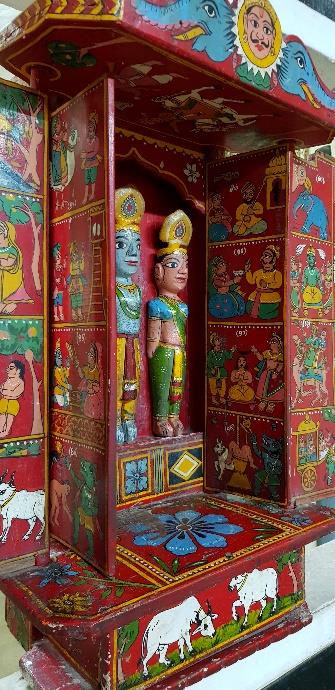
All photos by Lauren Winch




